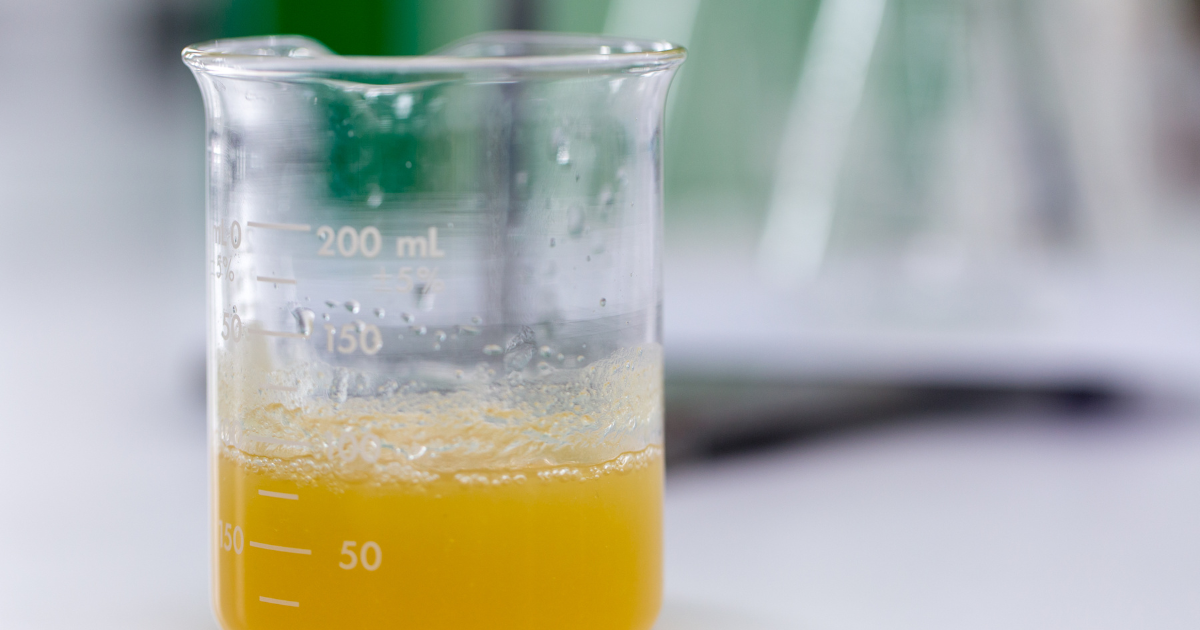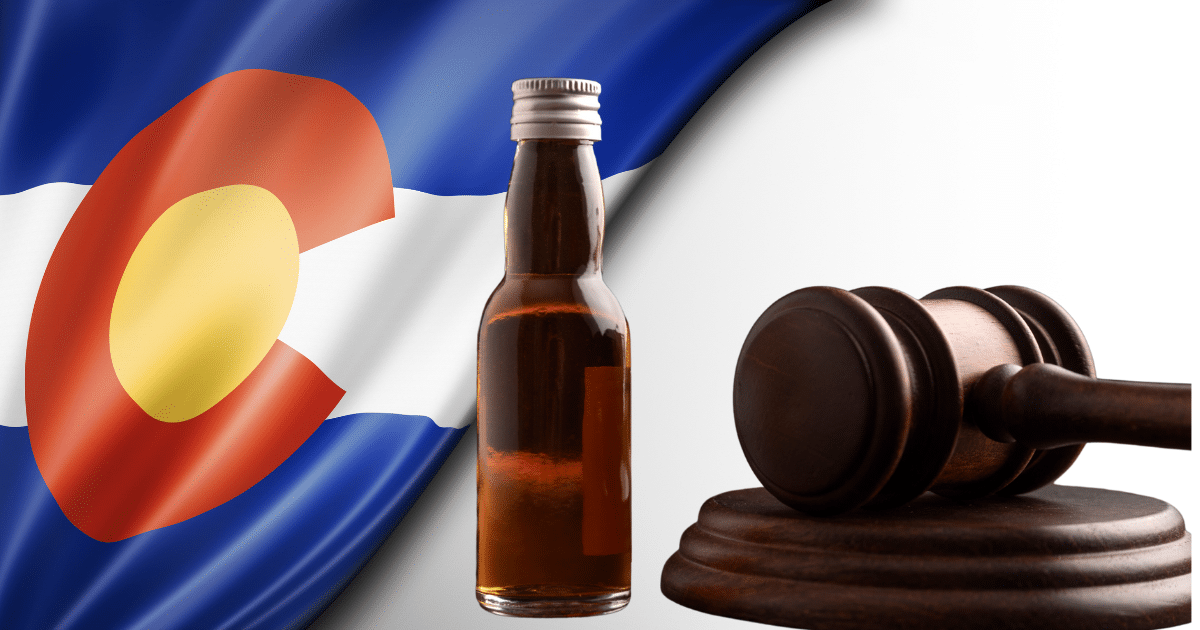Updated: May 23, 2023, at 11:20 a.m.
EtOH, the chemical title for ethanol alcohol, is one of the most commonly used substances in the United States. It’s also one of the leading causes of death. According to the National Institute on Alcohol Abuse and Alcoholism (NIAAA), over 140,000 people in the U.S. die from alcohol-related deaths each year, making it the fourth-leading preventable cause of death.
Discover the dangers of EtOH and learn about Landmark Recovery’s recovery services, like alcohol detox and inpatient rehab. If you or someone you know is struggling with alcohol abuse, call our confidential, 24/7 admissions phone line at 888-448-0302. Healthcare professionals, share this informative blog and download our descriptive infographic on EtOH to enhance your resources.
Together, let’s raise awareness and support those in need. In this blog, we’ll explore alcohol use disorder (AUD) and the addiction process to help you identify substance use behaviors in yourself or your loved ones. However, before learning about alcoholism and treatment, it’s best to fully understand the effects that alcohol can have on the body.
What Is EtOH?

EtOH is a term that is used to refer to ethanol alcohol. Ethanol alcohol — also called ethyl alcohol, grain alcohol, or just alcohol — is a member of a class of different organic compounds under the name alcohol. EtOH is used as a solvent, in the production of other chemicals or as an additive to gasoline.
While these are some of the uses, one of the most popular uses globally of ethanol is as an intoxicating ingredient in many alcoholic beverages such as:
- Beer
- Wine
- Distilled spirits
EtOH Side Effects
Alcohol is classified as a depressant, which means it slows down the central nervous system (CNS) and causes a decrease in:
- Motor functions
- Reaction time
- Cognitive abilities
As we drink more, the respiratory system slows drastically and can even lead to issues such as:
- Memory loss
- Coma
- Death
The problem can be even more dangerous if you mix alcohol with other drugs like oxycodone, or even other depressants like:
- Rohypnol
- Ketamine
- Tranquilizers
- Sleeping pills
Combining these depressants can multiply and enhance the effects of both drugs, leading to an increased likelihood of dealing with life-threatening problems.
EtOH and The Body
After swallowing alcohol, the drink will enter the stomach and small intestine, where small blood vessels carry it to the bloodstream. About 20% of alcohol is absorbed in the stomach while the remaining 80% is absorbed through the small intestine.
EtOH is metabolized by the liver, where enzymes break down the alcohol. In general, the liver processes one ounce of liquor per hour. If you consume more than this, the system can be saturated and additional alcohol will begin to accumulate in the blood until it can be metabolized by the liver.
This is why taking shots in rapid succession or playing drinking games can lead to high blood alcohol concentrations and last for many hours.
Understanding Blood Alcohol Content (BAC)
Understanding blood alcohol content (BAC) is key to understanding how alcohol will affect your body and the dangers of alcohol poisoning. BAC measures the ratio of alcohol in the blood. So, for example, a BAC of .10 means one part alcohol for every 1000 parts of blood.
If you’re curious to learn more about BAC, you can use one of the many resources that are available to you. For example, there are BAC calculators online in which you put your gender, weight, and drink numbers in to help calculate your BAC.
Moreover, you can learn how different BAC levels affect your thinking, feeling, and behavior. Here are ex
- 0.02 – 0.03 — Little effects, slight intensification of mood
- 0.05 – 0.06 — Feeling warm, relaxed, and mildly sedated; Exaggerated emotions and behavior; decreased reaction time; impaired judgement
- 0.07 – 0.09 — Speech impairment and problems with balance; poor motor functions; impaired hearing and vision; feelings of elation or depression; increased confidence
- 0.08 — Legal definition of intoxication in many states across the U.S.
- 0.11 – 0.12 — Coordination and balance become worse and there is a distinct hindrance in judgement and cognitive abilities
- 0.14 – 0.15 — Major impairments of mental and physical controls; speech is slurred, blurred vision; likely needs medical evaluation
- 0.20 — Complete loss of motor control; must have assistance moving
- 0.40 — Unconsciousness; coma; needs hospitalization
- 0.30 – 0.60 — This level has been measured in people who have died from alcohol intoxication
Fermentation
Ethanol has been produced since prehistoric times. This is generally done through the fermentation of fruit juices. The juices are stored in a sealed container. When making commercial alcohol other ingredients are added such as sugars and starches. Ethanol is called grain alcohol because it is often made from grains such as corn, wheat, rye, and barley. During generally yields a solution that is only 12 to 15 percent alcohol, however, the solution can be distilled to raise the ethanol content to as high as 95 percent.
Types of Ethanol Alcohol

EtOH, as mentioned before, is the chemical term to refer to ethanol alcohol, grain alcohol, or just alcohol. There are a number of different types of alcohol that are used for consumption. The primary forms of drinking alcohol are beer, wine, and distilled spirits. Many understand that these different styles of alcohol all of the different potencies, wine generally being the weakest and spirits being the strongest. This can make it hard for some to judge the amount of alcohol they have consumed and to know when it gets to a dangerous level.
While many people understand the differences between beer, wine, and spirits, some may not understand what a standard drink is. Moreover, the amount of liquid that is in your glass or bottle doesn’t necessarily match up with how much alcohol is in your drink. This is why it is important to know how much alcohol your drink contains. In the U.S., one drink contains about 14 grams of pure alcohol. In other words, a standard drink is considered:
- 12 ounces of regular beer, which is usually about 5 percent alcohol
- 5 ounces of wine, which is typically about 12 percent alcohol
- 1.5 ounces of distilled spirits, which is about 40 percent alcohol
Having an excessive amount of drinks may be one sign that you could be dealing with alcohol-related issues. However, a more telling sign of AUD is how the substance affects and changes you and your life.
Signs of Alcoholism

According to the National Institute on Alcohol Abuse and Alcoholism (NIAAA), over 28 million adults 18 years or older suffered from alcohol use disorder (AUD) in 2021. To be diagnosed with AUD, a person must meet certain criteria outlined in the Diagnostic and Statistical Manual of Mental Disorders. The current DSM has a number of different criteria to help someone determine if they may be dealing with some form of AUD.
To determine if you or a loved one may have an alcohol use disorder, the DSM asks you a number of questions.
In the past year, have you:
- Had times when you ended up drinking more or longer than originally intended?
- Tried to stop or cut drinking but couldn’t?
- Spent a lot of your time drinking or being sick from the aftereffects of drinking?
- Wanted a drink so badly that you couldn’t think of anything else?
- Found that your drinking interfered with taking care of your family or cause professional problems?
- Continued drinking even though it is causing problems with your family or friends?
- Given up or cut back on activities that were once important or interesting to you so that you could drink more?
- Gotten into situations while or after you were drinking that increased your chances of getting hurt?
- Continued to drink despite feelings of depression or anxiety or after having a memory blackout?
- Had to drink more than you once did to get the effects that you wanted?
- Experienced withdrawal symptoms as the effects of alcohol wore off? Symptoms include trouble sleeping, shakiness, restlessness, nausea, sweating, a racing heart, or a seizure.
The presence of at least two of these symptoms indicates an alcohol use disorder. However, the severity of the problem increases depending on the presence of symptoms. For example, mild severity is defined as the presence of two to three symptoms, moderate severity for four to five symptoms, and the problem is severe if there are six or more symptoms present.
Long-Term Risks
Alcohol abuse can lead to a number of physical and mental problems that can lead to life-threatening issues. For example, some long-term effects of excessive alcohol use can lead to issues such as:
- Bleeding from the esophagus
- Swelling of the pancreas
- Liver damage
- A number of different types of cancers
Some common cancers that are associated with excessive alcohol use include esophagus, liver, colon, head, neck, breasts, and other areas. Increased alcohol use also leads to cardiovascular issues such as high blood pressure and heart problems.
Short-Term Risks
Along with these problems, there is a long list of short-term health risks that can come from excessive alcohol use. For example, injuries such as motor vehicle crashes, falls, drownings, and more can all happen during intoxication. Likewise, outbursts of violence can also happen. Excessive alcohol use can also lead to alcohol poisoning, which generally requires medical attention.
Treatment For Alcohol Abuse
Luckily, for those suffering from alcohol use disorder, no matter how severe the problem may be, treatment is always an option. Research from the National Institute on Alcohol Abuse and Alcoholism said that about one-third of people who are treated for EtOH/alcohol problems have no further symptoms one year later. Many others were able to substantially reduce their drinking and reduce alcohol-related problems.
Medical Detox
The first step after going to a drug or alcohol treatment facility is medical detoxification. Detox is important as it lets you or your loved one safely overcome the withdrawal problems associated with short-term sobriety from EtOH-containing substances. This will help patients focus solely on behavioral treatment after the first few days of treatment.
Moreover, alcohol withdrawal can be a very serious problem and can lead to a number of harmful, even life-threatening symptoms.
Behavioral Therapy
Following detoxification, patients will likely be exposed to a number of different types of behavioral therapies, both in a one-on-one and group setting. During these sessions, patients will learn more about their specific addictions and the trigger that lead to their alcohol or drug use. They will also get the opportunity to learn and hear from others suffering from similar issues.
Group therapy also provides patients the opportunity to grow their sober support network which will help them on their road to recovery long after inpatient treatment.
Medication-Assisted Treatment (MAT)
While medication-assisted treatment (MAT) is still a hotly debated subject in the addiction recovery industry, there is evidence that MAT can be effective in reducing a patient’s craving for drinking and can even help them experience fewer days of drinking than those not using MAT.
Naltrexone is one of the most common forms of alcoholic MAT programs. This medication works to block the effects of alcohol. There is evidence that naltrexone can be effective in:
- Reducing a patient’s urge to drink
- Help a patient remain abstinent
- Interfering with a patient’s desire to continue drinking
Next Steps
Whether it’s you or your loved one that is suffering from some form of AUD, getting help and treatment should be a top priority. Regular alcohol use can lead to a long list of different problems including liver issues, cancer, and addiction. Thankfully, for those suffering from alcoholism, there is evidence that seeking and going through treatment can be effective for fixing the problem and achieving long-term sobriety.
Landmark Recovery is an addiction treatment provider dedicated to providing patients with the quality care they need and deserve to overcome substance use problems. Whether the drug is opioids, cocaine, EtOH, or another substance, Landmark can provide patients with a personalized care plan to give them the treatment that can help them choose recovery over addiction. If you would like to learn more about what Landmark can offer, please visit our website and call our admissions team at 888-448-0302 to learn more about your personal path forward.

Choose Recovery Over Addiction
We're here 24/7 to help you get the care you need to live life on your terms, without drugs or alcohol. Talk to our recovery specialists today and learn about our integrated treatment programs.





